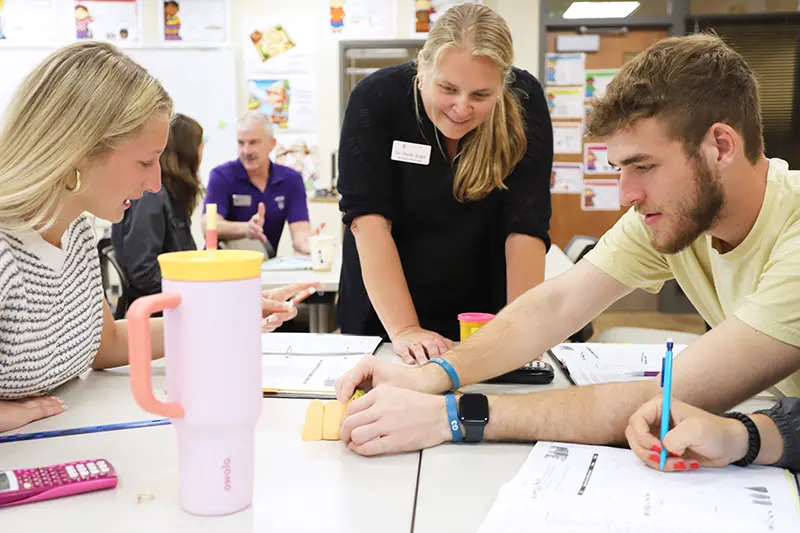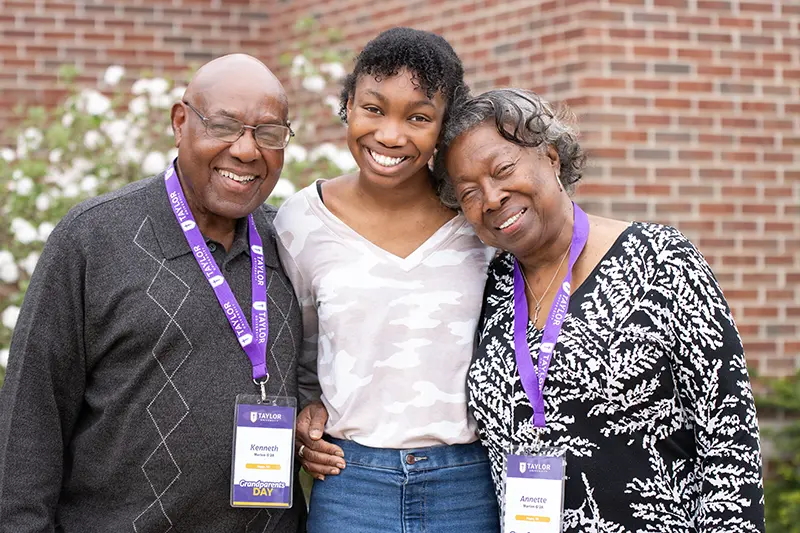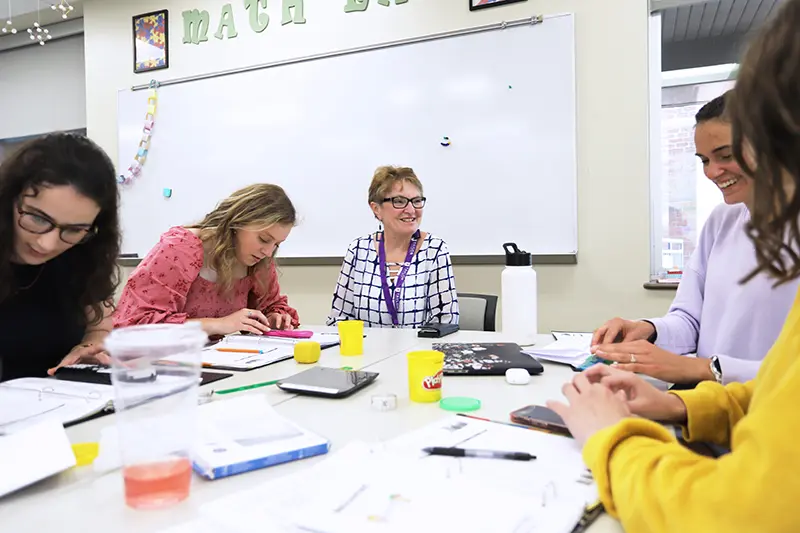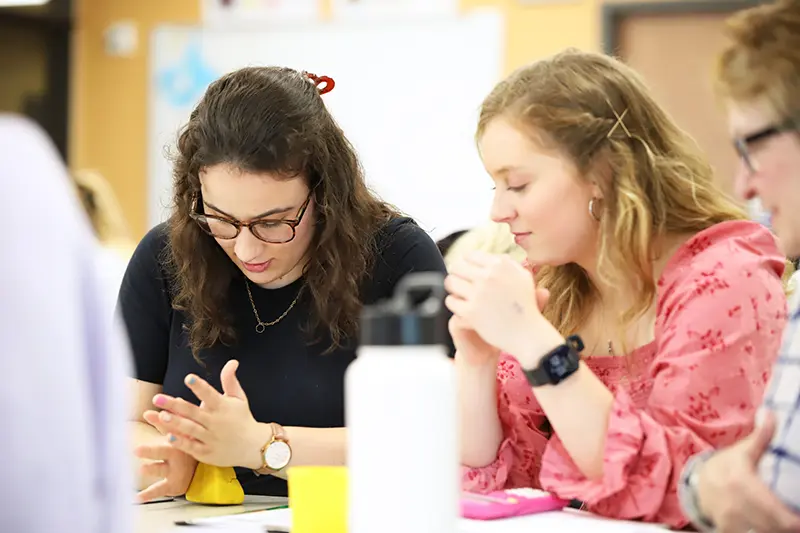-
-
- Financial Aid
- Financial Aid
- Scholarships
- Loans
- Grants
- Federal Work Study
- Additional Resources
-

On Grandparents Day at Taylor University, a group of junior Education students used Play-Doh to solve math problems. The lesson focused on integrating math and science in the elementary school classroom and had been previously published in the Hoosier Science Teacher Journal in 2024 by Dr. Patrick Eggleton, Department Co-Chair & Professor of Mathematics, and Dr. Shelly Engle, Director of Teacher Education & Assistant Professor of Education. This was the fourth time that they collaborated in bringing the hands-on activity to Education majors, and they plan on submitting it to a conference this year.

The Play-Doh project has traditionally taken place on Grandparents Day to encourage a sense of camaraderie during a shared educational experience between students and their loved ones. Chloe Merillat, a junior Elementary Education major, formed a triangular prism out of Play-Doh and began working on a mathematical formula while her grandmother, Karen Kubkle, watched.
“I’ve never been involved in anything like this—it’s kind of cool,” Kubkle said. “It gets you thinking, and it’s a good project for the kids.”
Students sat in small groups, rolling out Play-Doh and forming pyramids, prisms, cylinders, and other shapes before finding the volume of them using a mathematical formula from their course packets. Eggleton encouraged them to create a hypothesis on whether the volume would be the same for each object before testing it.

Elementary Education classes like this one are focused on prepping Taylor students to be effective at teaching children foundational concepts, often using tangible objects to help them conceptualize an idea.
The lesson combined the application of mathematical formulas and the conservation of mass, streamlining foundational aspects of math and science. As students worked, they noted that the math problems got progressively more abstract, a method in teaching known as “scaffolding.” This is an effective way for teachers to solidify the core points of a lesson correctly in the student’s mind.
The exercise stressed the potential for error that a teacher can encounter with hands-on class exercises. Students pointed out that the Play-Doh captured air bubbles and pockets, throwing off measurements by creating a percent error. Engle encouraged preservice teachers to give their insight when doing a project like this, articulating why data might not totally align with the proposed hypothesis.
“Errors on our part in capturing evidence could promote errors in reasoning and the understanding that students develop,” she said.
Measurements taken in life are often flawed, so it is important that a student can implement the idea of averaging to establish the most balanced answer possible.

Some school corporations do not teach science explicitly in the elementary setting because they are more focused on testable subjects, like reading, writing, and arithmetic, Engle said. Taylor’s Elementary Education classes aim to give students the skills to incorporate science into multiple content areas or bring other disciplines into the science arena, giving children a better grasp of the world.
“We model co-teaching here, and we are also modeling the integration of math and science together,” Engle said.
Elementary Education majors form a natural cohort, as they spend a large amount of time together in their core methods class sessions during the day as juniors. Taylor’s teaching model builds familiarity by encouraging group collaboration time to explore methods on a deeper level. Students learn important concepts on Monday, Wednesday, and Friday and then implement and finesse this knowledge in the classroom with all-day practicums on Tuesdays and Thursdays.